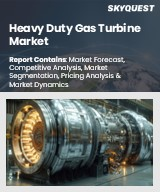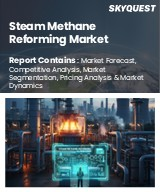
|
시장보고서
상품코드
1579785
세계의 천연가스 파이프라인 시장Natural Gas Pipeline |
||||||
천연가스 파이프라인 세계 시장은 2030년까지 393억 달러에 달할 것으로 예상됩니다.
2023년 325억 달러로 추정되는 천연가스 파이프라인 세계 시장은 2023년부터 2030년까지 연평균 2.7% 성장하여 2030년에는 393억 달러에 달할 것으로 예상됩니다. 이 보고서에서 분석한 부문 중 하나인 육상 파이프라인은 CAGR 2.6%를 기록하여 분석 기간 종료 시점에 277억 달러에 도달할 것으로 예상됩니다. 오프쇼어 파이프라인 부문은 분석 기간 동안 CAGR 3.2%의 성장률을 나타낼 것으로 예상됩니다.
미국 시장은 95억 달러, 중국 CAGR 2.7%로 성장 전망
미국의 천연가스 파이프라인 시장 규모는 2023년 95억 달러로 추정됩니다. 세계 2위의 경제 대국인 중국은 2030년까지 71억 달러 규모에 도달할 것으로 예상되며, 2023-2030년간 2.7%의 연평균 복합 성장률(CAGR)을 나타낼 것으로 예상됩니다. 다른 주목할 만한 지역 시장으로는 일본과 캐나다가 있으며, 분석 기간 동안 각각 2.6%와 2.3%의 연평균 복합 성장률(CAGR)을 나타낼 것으로 예상됩니다. 유럽에서는 독일이 2.6%의 연평균 복합 성장률(CAGR)을 나타낼 전망입니다.
세계 천연가스 파이프라인 시장 - 주요 동향 및 촉진요인 요약
천연가스 파이프라인이란 무엇이며, 에너지 인프라로서 왜 중요한가?
천연가스 파이프라인은 천연가스를 생산지에서 처리 공장, 저장 시설, 유통망으로 운반하기 위해 설계된 대규모 인프라 시스템입니다. 이 파이프라인은 산업, 발전소, 가정에 천연가스를 공급하는 데 매우 중요하며, 전 세계 에너지 인프라의 근간을 형성하고 있습니다. 천연가스는 다른 화석연료를 대체할 수 있는 청정 연료로 간주되며, 발전, 산업용 난방, 화학물질의 원료로 중요한 역할을 하고 있습니다. 파이프라인은 대량의 천연가스를 장거리로 이동시키는 가장 효율적이고 비용 효율적인 방법으로, 안정적이고 지속적인 에너지 공급을 보장합니다. 청정 에너지에 대한 수요가 증가함에 따라 천연가스 파이프라인의 확장 및 현대화는 미래의 에너지 수요를 충족시키기 위해 필수적입니다.
천연가스 파이프라인은 세계 에너지 공급을 어떻게 형성하고 있는가?
천연가스 파이프라인은 전 세계 에너지 공급에 필수적인 요소로, 다양한 지역으로 가스를 안전하고 신뢰할 수 있으며 효율적으로 운송할 수 있도록 돕습니다. 석탄과 석유에 비해 청정 에너지원인 천연가스로의 전환이 진행됨에 따라 파이프라인의 개발 및 확장이 점점 더 많이 이루어지고 있습니다. 북미, 유럽, 아시아 일부 지역 등 주요 지역에서는 에너지 전환 목표를 지원하기 위해 파이프라인 네트워크에 많은 투자를 하고 있습니다. 미국에서는 셰일가스 붐으로 인해 천연가스 생산량이 증가하면서 국내외로 가스를 공급하는 파이프라인 네트워크의 확장이 필요합니다. 마찬가지로 유럽은 특히 러시아로부터의 천연가스 수입 의존도가 높아지면서 국경을 넘어서는 대규모 파이프라인 프로젝트가 건설되고 있습니다. 파이프라인은 또한 액화 및 재가스화 전후의 가스 수송에 필요한 인프라를 제공함으로써 액화천연가스(LNG) 터미널을 지원하는 중요한 역할을 하고 있습니다.
천연가스 파이프라인 산업의 새로운 동향은 무엇인가?
현재 천연가스 파이프라인 산업은 몇 가지 트렌드가 형성되고 있습니다. 탈탄소화와 온실가스 감축에 대한 관심이 높아지면서 파이프라인의 현대화, 특히 배출의 주요 원인인 메탄 누출을 감지하고 감축해야 할 필요성이 대두되고 있습니다. 스마트 센서와 자동화 등의 기술 발전으로 파이프라인 모니터링이 개선되어 실시간 데이터 수집과 누출 및 고장을 방지하기 위한 예측 유지보수가 가능해졌습니다. 또 다른 큰 흐름은 에너지 공급 경로를 다양화하고 에너지 안보를 강화하기 위해 국경을 넘나드는 파이프라인 프로젝트가 증가하고 있다는 점입니다. 또한, 천연가스 파이프라인에서 수소 혼합으로의 전환이 주목받고 있으며, 여러 기업들이 미래 에너지 시스템의 일부로 기존 파이프라인을 통해 수소를 운송하는 방법을 모색하고 있습니다. 또한, 지정학적 요인이 파이프라인 건설과 규제에 영향을 미치고 있으며, 특히 에너지 독립과 안보가 주요 관심사인 지역에서는 이러한 경향이 두드러집니다.
천연가스 파이프라인 시장의 성장을 가속하는 요인은 무엇일까?
천연가스 파이프라인 시장의 성장은 다른 화석연료를 대체할 수 있는 청정 연료로서의 천연가스 수요 증가, 에너지 안보에 대한 수요 증가, 에너지 인프라에 대한 대규모 투자 등 여러 요인에 의해 주도되고 있습니다. 전 세계적으로 탄소배출량 감축을 추진하면서 석탄과 석유에서 천연가스로의 전환이 가속화되고 있으며, 이에 따라 주거, 산업, 발전 부문의 소비 확대를 뒷받침하는 파이프라인 인프라에 대한 수요가 증가하고 있습니다. 또한, 특히 셰일가스 등 비전통적 가스 공급원으로부터의 천연가스 생산량 증가로 인해 파이프라인 용량 확대의 필요성이 대두되고 있습니다. 지정학적 움직임과 유럽, 아시아 등의 지역에서 안정적인 에너지 공급을 확보하려는 노력도 국경을 넘는 파이프라인 개발을 촉진하고 있습니다. 또한, 메탄 배출량을 줄이고 안전성을 향상시키기 위한 파이프라인 모니터링 기술의 발전은 시장 성장을 더욱 촉진하고 있습니다. 각국이 에너지 믹스를 다양화하기 위해 노력하는 가운데, 천연가스 파이프라인의 확장은 세계 에너지 전환 목표를 달성하는 데 있어 계속해서 중요한 역할을 할 것입니다.
조사 대상 기업 예시(총 29건)
- ABB Group
- Aker Solutions ASA
- Bechtel Corporation
- Bharat Petroleum Corp.
- BP PLC
- Cairn Oil & Gas
- Caspian Pipeline Consortium
- China National Petroleum Corporation
- Daewoo Engineering & Construction Co., Ltd.
- Emerson Process Management
- Enterprise Products Partners LP
- GE Oil & Gas
- Huawei Technologies Co.
- Hyundai Heavy Industries, Ltd.
- Infosys Ltd.
- Inter Pipeline Ltd.
- MOL Hungarian Oil & Gas Plc.
- Mott MacDonald Group Ltd.
- Rockwell Automation, Inc.
- Saipem S.p.A.
- SAP SE
- Saudi Arabian Oil Co.
- Schneider Electric SA
- Sunoco LP
- Technip S.A
- Tecnicas Reunidas S.A.
- Valero Energy Corporation
- Wipro Limited
- WorleyParsons Group
- Yokogawa Electric Corporation
- ZTE Corporation
목차
제1장 조사 방법
제2장 주요 요약
- 시장 개요
- 주요 기업
- 시장 동향과 촉진요인
- 세계 시장 전망
제3장 시장 분석
- 미국
- 캐나다
- 일본
- 중국
- 유럽
- 프랑스
- 독일
- 이탈리아
- 영국
- 기타 유럽
- 아시아태평양
- 기타 지역
제4장 경쟁
LSH 24.11.01Global Natural Gas Pipeline Market to Reach US$39.3 Billion by 2030
The global market for Natural Gas Pipeline estimated at US$32.5 Billion in the year 2023, is expected to reach US$39.3 Billion by 2030, growing at a CAGR of 2.7% over the analysis period 2023-2030. On-Shore Pipeline, one of the segments analyzed in the report, is expected to record a 2.6% CAGR and reach US$27.7 Billion by the end of the analysis period. Growth in the Off-Shore Pipeline segment is estimated at 3.2% CAGR over the analysis period.
The U.S. Market is Estimated at US$9.5 Billion While China is Forecast to Grow at 2.7% CAGR
The Natural Gas Pipeline market in the U.S. is estimated at US$9.5 Billion in the year 2023. China, the world's second largest economy, is forecast to reach a projected market size of US$7.1 Billion by the year 2030 trailing a CAGR of 2.7% over the analysis period 2023-2030. Among the other noteworthy geographic markets are Japan and Canada, each forecast to grow at a CAGR of 2.6% and 2.3% respectively over the analysis period. Within Europe, Germany is forecast to grow at approximately 2.6% CAGR.
Global Natural Gas Pipeline Market - Key Trends & Drivers Summarized
What Are Natural Gas Pipelines, and Why Are They Important for Energy Infrastructure?
Natural gas pipelines are large-scale infrastructure systems designed to transport natural gas from production sites to processing plants, storage facilities, and distribution networks. These pipelines are crucial for supplying natural gas to industries, power plants, and homes, forming the backbone of global energy infrastructure. Natural gas, considered a cleaner alternative to other fossil fuels, plays a key role in power generation, industrial heating, and as a feedstock for chemicals. Pipelines are the most efficient and cost-effective method for moving large quantities of natural gas across long distances, ensuring a stable and continuous energy supply. Given the growing demand for cleaner energy, the expansion and modernization of natural gas pipelines are essential for meeting future energy needs.
How Are Natural Gas Pipelines Shaping Global Energy Supply?
Natural gas pipelines are vital to global energy supply, facilitating the safe, reliable, and efficient transport of gas to various regions. With the rising shift towards natural gas as a cleaner energy source compared to coal and oil, pipelines are increasingly being developed and expanded. Key regions such as North America, Europe, and parts of Asia are investing heavily in pipeline networks to support their energy transition goals. In the U.S., the shale gas boom has led to increased natural gas production, necessitating an expanded pipeline network to distribute gas to domestic and international markets. Similarly, Europe’s growing reliance on natural gas imports, particularly from Russia, has led to the construction of major transnational pipeline projects. Pipelines also play a crucial role in supporting liquefied natural gas (LNG) terminals by providing the necessary infrastructure for gas transport before and after liquefaction and regasification.
What Are the Emerging Trends in the Natural Gas Pipeline Industry?
Several trends are currently shaping the natural gas pipeline industry. The increasing focus on decarbonization and reducing greenhouse gas emissions is driving the need for pipeline modernization, particularly in detecting and reducing methane leaks, which are a significant source of emissions. Technological advancements, such as smart sensors and automation, are improving pipeline monitoring, enabling real-time data collection and predictive maintenance to avoid leaks and breakdowns. Another significant trend is the rise of cross-border pipeline projects aimed at diversifying energy supply routes and enhancing energy security. The transition to hydrogen blending in natural gas pipelines is also gaining traction, with several companies exploring how existing pipelines can transport hydrogen as part of future energy systems. Additionally, geopolitical factors are influencing the construction and regulation of pipelines, especially in regions where energy independence and security are major concerns.
What Factors Are Driving Growth in the Natural Gas Pipeline Market?
The growth in the natural gas pipeline market is driven by several factors, including the rising demand for natural gas as a cleaner alternative to other fossil fuels, the increasing need for energy security, and significant investments in energy infrastructure development. The global push to reduce carbon emissions has accelerated the shift from coal and oil to natural gas, resulting in higher demand for pipeline infrastructure to support growing consumption in residential, industrial, and power generation sectors. Additionally, increased natural gas production, especially from unconventional sources like shale gas, is creating the need for expanded pipeline capacity. Geopolitical developments and efforts to secure stable energy supplies in regions such as Europe and Asia have also boosted the development of cross-border pipelines. Moreover, advancements in pipeline monitoring technology, aimed at reducing methane emissions and enhancing safety, are further driving market growth. As countries seek to diversify their energy mix, the expansion of natural gas pipelines remains critical in achieving global energy transition goals.
Select Competitors (Total 29 Featured) -
- ABB Group
- Aker Solutions ASA
- Bechtel Corporation
- Bharat Petroleum Corp. Ltd.
- BP PLC
- Cairn Oil & Gas
- Caspian Pipeline Consortium
- China National Petroleum Corporation
- Daewoo Engineering & Construction Co., Ltd.
- Emerson Process Management
- Enterprise Products Partners LP
- GE Oil & Gas
- Huawei Technologies Co., Ltd.
- Hyundai Heavy Industries Co., Ltd.
- Infosys Ltd.
- Inter Pipeline Ltd.
- MOL Hungarian Oil and Gas Plc.
- Mott MacDonald Group Ltd.
- Rockwell Automation, Inc.
- Saipem S.p.A.
- SAP SE
- Saudi Arabian Oil Co
- Schneider Electric SA
- Sunoco LP
- Technip S.A
- Tecnicas Reunidas S.A.
- Valero Energy Corporation
- Wipro Limited
- WorleyParsons Group
- Yokogawa Electric Corporation
- ZTE Corporation
TABLE OF CONTENTS
I. METHODOLOGY
II. EXECUTIVE SUMMARY
- 1. MARKET OVERVIEW
- Influencer Market Insights
- World Market Trajectories
- Global Economic Update
- Natural Gas Pipeline - Global Key Competitors Percentage Market Share in 2024 (E)
- Competitive Market Presence - Strong/Active/Niche/Trivial for Players Worldwide in 2024 (E)
- 2. FOCUS ON SELECT PLAYERS
- 3. MARKET TRENDS & DRIVERS
- Rising Global Demand for Natural Gas Drives Expansion of Pipeline Infrastructure in Key Markets
- Increasing Investment in Cross-Border Pipelines Strengthens Energy Security and Expands Addressable Market for Natural Gas
- Geopolitical Dynamics and Strategic Energy Alliances Propel Growth in Natural Gas Pipeline Projects
- Technological Advancements in Pipeline Monitoring and Leak Detection Systems Enhance Safety and Operational Efficiency
- Shifting Energy Policies and Government Incentives Drive New Pipeline Construction to Support Growing LNG Markets
- Rising Focus on Reducing Methane Emissions Spurs Innovation in Low-Emission Natural Gas Pipelines
- Increasing Integration of Renewable Energy with Natural Gas Pipelines Expands Opportunities for Hybrid Energy Solutions
- Growing Demand for Natural Gas in Power Generation Fuels the Development of High-Capacity Transmission Pipelines
- Economic Growth and Industrial Expansion in Emerging Markets Boost Demand for Localized Natural Gas Pipeline Networks
- Rising Need for Energy Diversification and Decarbonization Supports the Expansion of Natural Gas as a Transitional Fuel
- Technological Innovations in Pipeline Materials and Construction Techniques Drive Efficiency and Reduce Costs
- 4. GLOBAL MARKET PERSPECTIVE
- TABLE 1: World Natural Gas Pipeline Market Analysis of Annual Sales in US$ Million for Years 2014 through 2030
- TABLE 2: World Recent Past, Current & Future Analysis for Natural Gas Pipeline by Geographic Region - USA, Canada, Japan, China, Europe, Asia-Pacific and Rest of World Markets - Independent Analysis of Annual Revenues in US$ Million for Years 2023 through 2030 and % CAGR
- TABLE 3: World Historic Review for Natural Gas Pipeline by Geographic Region - USA, Canada, Japan, China, Europe, Asia-Pacific and Rest of World Markets - Independent Analysis of Annual Revenues in US$ Million for Years 2014 through 2022 and % CAGR
- TABLE 4: World 16-Year Perspective for Natural Gas Pipeline by Geographic Region - Percentage Breakdown of Value Revenues for USA, Canada, Japan, China, Europe, Asia-Pacific and Rest of World Markets for Years 2014, 2024 & 2030
- TABLE 5: World Recent Past, Current & Future Analysis for On-Shore Pipeline by Geographic Region - USA, Canada, Japan, China, Europe, Asia-Pacific and Rest of World Markets - Independent Analysis of Annual Revenues in US$ Million for Years 2023 through 2030 and % CAGR
- TABLE 6: World Historic Review for On-Shore Pipeline by Geographic Region - USA, Canada, Japan, China, Europe, Asia-Pacific and Rest of World Markets - Independent Analysis of Annual Revenues in US$ Million for Years 2014 through 2022 and % CAGR
- TABLE 7: World 16-Year Perspective for On-Shore Pipeline by Geographic Region - Percentage Breakdown of Value Revenues for USA, Canada, Japan, China, Europe, Asia-Pacific and Rest of World for Years 2014, 2024 & 2030
- TABLE 8: World Recent Past, Current & Future Analysis for Off-Shore Pipeline by Geographic Region - USA, Canada, Japan, China, Europe, Asia-Pacific and Rest of World Markets - Independent Analysis of Annual Revenues in US$ Million for Years 2023 through 2030 and % CAGR
- TABLE 9: World Historic Review for Off-Shore Pipeline by Geographic Region - USA, Canada, Japan, China, Europe, Asia-Pacific and Rest of World Markets - Independent Analysis of Annual Revenues in US$ Million for Years 2014 through 2022 and % CAGR
- TABLE 10: World 16-Year Perspective for Off-Shore Pipeline by Geographic Region - Percentage Breakdown of Value Revenues for USA, Canada, Japan, China, Europe, Asia-Pacific and Rest of World for Years 2014, 2024 & 2030
III. MARKET ANALYSIS
- UNITED STATES
- Natural Gas Pipeline Market Presence - Strong/Active/Niche/Trivial - Key Competitors in the United States for 2024 (E)
- TABLE 11: USA Recent Past, Current & Future Analysis for Natural Gas Pipeline by Pipeline Type - On-Shore Pipeline and Off-Shore Pipeline - Independent Analysis of Annual Revenues in US$ Million for the Years 2023 through 2030 and % CAGR
- TABLE 12: USA Historic Review for Natural Gas Pipeline by Pipeline Type - On-Shore Pipeline and Off-Shore Pipeline Markets - Independent Analysis of Annual Revenues in US$ Million for Years 2014 through 2022 and % CAGR
- TABLE 13: USA 16-Year Perspective for Natural Gas Pipeline by Pipeline Type - Percentage Breakdown of Value Revenues for On-Shore Pipeline and Off-Shore Pipeline for the Years 2014, 2024 & 2030
- CANADA
- TABLE 14: Canada Recent Past, Current & Future Analysis for Natural Gas Pipeline by Pipeline Type - On-Shore Pipeline and Off-Shore Pipeline - Independent Analysis of Annual Revenues in US$ Million for the Years 2023 through 2030 and % CAGR
- TABLE 15: Canada Historic Review for Natural Gas Pipeline by Pipeline Type - On-Shore Pipeline and Off-Shore Pipeline Markets - Independent Analysis of Annual Revenues in US$ Million for Years 2014 through 2022 and % CAGR
- TABLE 16: Canada 16-Year Perspective for Natural Gas Pipeline by Pipeline Type - Percentage Breakdown of Value Revenues for On-Shore Pipeline and Off-Shore Pipeline for the Years 2014, 2024 & 2030
- JAPAN
- Natural Gas Pipeline Market Presence - Strong/Active/Niche/Trivial - Key Competitors in Japan for 2024 (E)
- TABLE 17: Japan Recent Past, Current & Future Analysis for Natural Gas Pipeline by Pipeline Type - On-Shore Pipeline and Off-Shore Pipeline - Independent Analysis of Annual Revenues in US$ Million for the Years 2023 through 2030 and % CAGR
- TABLE 18: Japan Historic Review for Natural Gas Pipeline by Pipeline Type - On-Shore Pipeline and Off-Shore Pipeline Markets - Independent Analysis of Annual Revenues in US$ Million for Years 2014 through 2022 and % CAGR
- TABLE 19: Japan 16-Year Perspective for Natural Gas Pipeline by Pipeline Type - Percentage Breakdown of Value Revenues for On-Shore Pipeline and Off-Shore Pipeline for the Years 2014, 2024 & 2030
- CHINA
- Natural Gas Pipeline Market Presence - Strong/Active/Niche/Trivial - Key Competitors in China for 2024 (E)
- TABLE 20: China Recent Past, Current & Future Analysis for Natural Gas Pipeline by Pipeline Type - On-Shore Pipeline and Off-Shore Pipeline - Independent Analysis of Annual Revenues in US$ Million for the Years 2023 through 2030 and % CAGR
- TABLE 21: China Historic Review for Natural Gas Pipeline by Pipeline Type - On-Shore Pipeline and Off-Shore Pipeline Markets - Independent Analysis of Annual Revenues in US$ Million for Years 2014 through 2022 and % CAGR
- TABLE 22: China 16-Year Perspective for Natural Gas Pipeline by Pipeline Type - Percentage Breakdown of Value Revenues for On-Shore Pipeline and Off-Shore Pipeline for the Years 2014, 2024 & 2030
- EUROPE
- Natural Gas Pipeline Market Presence - Strong/Active/Niche/Trivial - Key Competitors in Europe for 2024 (E)
- TABLE 23: Europe Recent Past, Current & Future Analysis for Natural Gas Pipeline by Geographic Region - France, Germany, Italy, UK and Rest of Europe Markets - Independent Analysis of Annual Revenues in US$ Million for Years 2023 through 2030 and % CAGR
- TABLE 24: Europe Historic Review for Natural Gas Pipeline by Geographic Region - France, Germany, Italy, UK and Rest of Europe Markets - Independent Analysis of Annual Revenues in US$ Million for Years 2014 through 2022 and % CAGR
- TABLE 25: Europe 16-Year Perspective for Natural Gas Pipeline by Geographic Region - Percentage Breakdown of Value Revenues for France, Germany, Italy, UK and Rest of Europe Markets for Years 2014, 2024 & 2030
- TABLE 26: Europe Recent Past, Current & Future Analysis for Natural Gas Pipeline by Pipeline Type - On-Shore Pipeline and Off-Shore Pipeline - Independent Analysis of Annual Revenues in US$ Million for the Years 2023 through 2030 and % CAGR
- TABLE 27: Europe Historic Review for Natural Gas Pipeline by Pipeline Type - On-Shore Pipeline and Off-Shore Pipeline Markets - Independent Analysis of Annual Revenues in US$ Million for Years 2014 through 2022 and % CAGR
- TABLE 28: Europe 16-Year Perspective for Natural Gas Pipeline by Pipeline Type - Percentage Breakdown of Value Revenues for On-Shore Pipeline and Off-Shore Pipeline for the Years 2014, 2024 & 2030
- FRANCE
- Natural Gas Pipeline Market Presence - Strong/Active/Niche/Trivial - Key Competitors in France for 2024 (E)
- TABLE 29: France Recent Past, Current & Future Analysis for Natural Gas Pipeline by Pipeline Type - On-Shore Pipeline and Off-Shore Pipeline - Independent Analysis of Annual Revenues in US$ Million for the Years 2023 through 2030 and % CAGR
- TABLE 30: France Historic Review for Natural Gas Pipeline by Pipeline Type - On-Shore Pipeline and Off-Shore Pipeline Markets - Independent Analysis of Annual Revenues in US$ Million for Years 2014 through 2022 and % CAGR
- TABLE 31: France 16-Year Perspective for Natural Gas Pipeline by Pipeline Type - Percentage Breakdown of Value Revenues for On-Shore Pipeline and Off-Shore Pipeline for the Years 2014, 2024 & 2030
- GERMANY
- Natural Gas Pipeline Market Presence - Strong/Active/Niche/Trivial - Key Competitors in Germany for 2024 (E)
- TABLE 32: Germany Recent Past, Current & Future Analysis for Natural Gas Pipeline by Pipeline Type - On-Shore Pipeline and Off-Shore Pipeline - Independent Analysis of Annual Revenues in US$ Million for the Years 2023 through 2030 and % CAGR
- TABLE 33: Germany Historic Review for Natural Gas Pipeline by Pipeline Type - On-Shore Pipeline and Off-Shore Pipeline Markets - Independent Analysis of Annual Revenues in US$ Million for Years 2014 through 2022 and % CAGR
- TABLE 34: Germany 16-Year Perspective for Natural Gas Pipeline by Pipeline Type - Percentage Breakdown of Value Revenues for On-Shore Pipeline and Off-Shore Pipeline for the Years 2014, 2024 & 2030
- ITALY
- TABLE 35: Italy Recent Past, Current & Future Analysis for Natural Gas Pipeline by Pipeline Type - On-Shore Pipeline and Off-Shore Pipeline - Independent Analysis of Annual Revenues in US$ Million for the Years 2023 through 2030 and % CAGR
- TABLE 36: Italy Historic Review for Natural Gas Pipeline by Pipeline Type - On-Shore Pipeline and Off-Shore Pipeline Markets - Independent Analysis of Annual Revenues in US$ Million for Years 2014 through 2022 and % CAGR
- TABLE 37: Italy 16-Year Perspective for Natural Gas Pipeline by Pipeline Type - Percentage Breakdown of Value Revenues for On-Shore Pipeline and Off-Shore Pipeline for the Years 2014, 2024 & 2030
- UNITED KINGDOM
- Natural Gas Pipeline Market Presence - Strong/Active/Niche/Trivial - Key Competitors in the United Kingdom for 2024 (E)
- TABLE 38: UK Recent Past, Current & Future Analysis for Natural Gas Pipeline by Pipeline Type - On-Shore Pipeline and Off-Shore Pipeline - Independent Analysis of Annual Revenues in US$ Million for the Years 2023 through 2030 and % CAGR
- TABLE 39: UK Historic Review for Natural Gas Pipeline by Pipeline Type - On-Shore Pipeline and Off-Shore Pipeline Markets - Independent Analysis of Annual Revenues in US$ Million for Years 2014 through 2022 and % CAGR
- TABLE 40: UK 16-Year Perspective for Natural Gas Pipeline by Pipeline Type - Percentage Breakdown of Value Revenues for On-Shore Pipeline and Off-Shore Pipeline for the Years 2014, 2024 & 2030
- REST OF EUROPE
- TABLE 41: Rest of Europe Recent Past, Current & Future Analysis for Natural Gas Pipeline by Pipeline Type - On-Shore Pipeline and Off-Shore Pipeline - Independent Analysis of Annual Revenues in US$ Million for the Years 2023 through 2030 and % CAGR
- TABLE 42: Rest of Europe Historic Review for Natural Gas Pipeline by Pipeline Type - On-Shore Pipeline and Off-Shore Pipeline Markets - Independent Analysis of Annual Revenues in US$ Million for Years 2014 through 2022 and % CAGR
- TABLE 43: Rest of Europe 16-Year Perspective for Natural Gas Pipeline by Pipeline Type - Percentage Breakdown of Value Revenues for On-Shore Pipeline and Off-Shore Pipeline for the Years 2014, 2024 & 2030
- ASIA-PACIFIC
- Natural Gas Pipeline Market Presence - Strong/Active/Niche/Trivial - Key Competitors in Asia-Pacific for 2024 (E)
- TABLE 44: Asia-Pacific Recent Past, Current & Future Analysis for Natural Gas Pipeline by Pipeline Type - On-Shore Pipeline and Off-Shore Pipeline - Independent Analysis of Annual Revenues in US$ Million for the Years 2023 through 2030 and % CAGR
- TABLE 45: Asia-Pacific Historic Review for Natural Gas Pipeline by Pipeline Type - On-Shore Pipeline and Off-Shore Pipeline Markets - Independent Analysis of Annual Revenues in US$ Million for Years 2014 through 2022 and % CAGR
- TABLE 46: Asia-Pacific 16-Year Perspective for Natural Gas Pipeline by Pipeline Type - Percentage Breakdown of Value Revenues for On-Shore Pipeline and Off-Shore Pipeline for the Years 2014, 2024 & 2030
- REST OF WORLD
- TABLE 47: Rest of World Recent Past, Current & Future Analysis for Natural Gas Pipeline by Pipeline Type - On-Shore Pipeline and Off-Shore Pipeline - Independent Analysis of Annual Revenues in US$ Million for the Years 2023 through 2030 and % CAGR
- TABLE 48: Rest of World Historic Review for Natural Gas Pipeline by Pipeline Type - On-Shore Pipeline and Off-Shore Pipeline Markets - Independent Analysis of Annual Revenues in US$ Million for Years 2014 through 2022 and % CAGR
- TABLE 49: Rest of World 16-Year Perspective for Natural Gas Pipeline by Pipeline Type - Percentage Breakdown of Value Revenues for On-Shore Pipeline and Off-Shore Pipeline for the Years 2014, 2024 & 2030




















